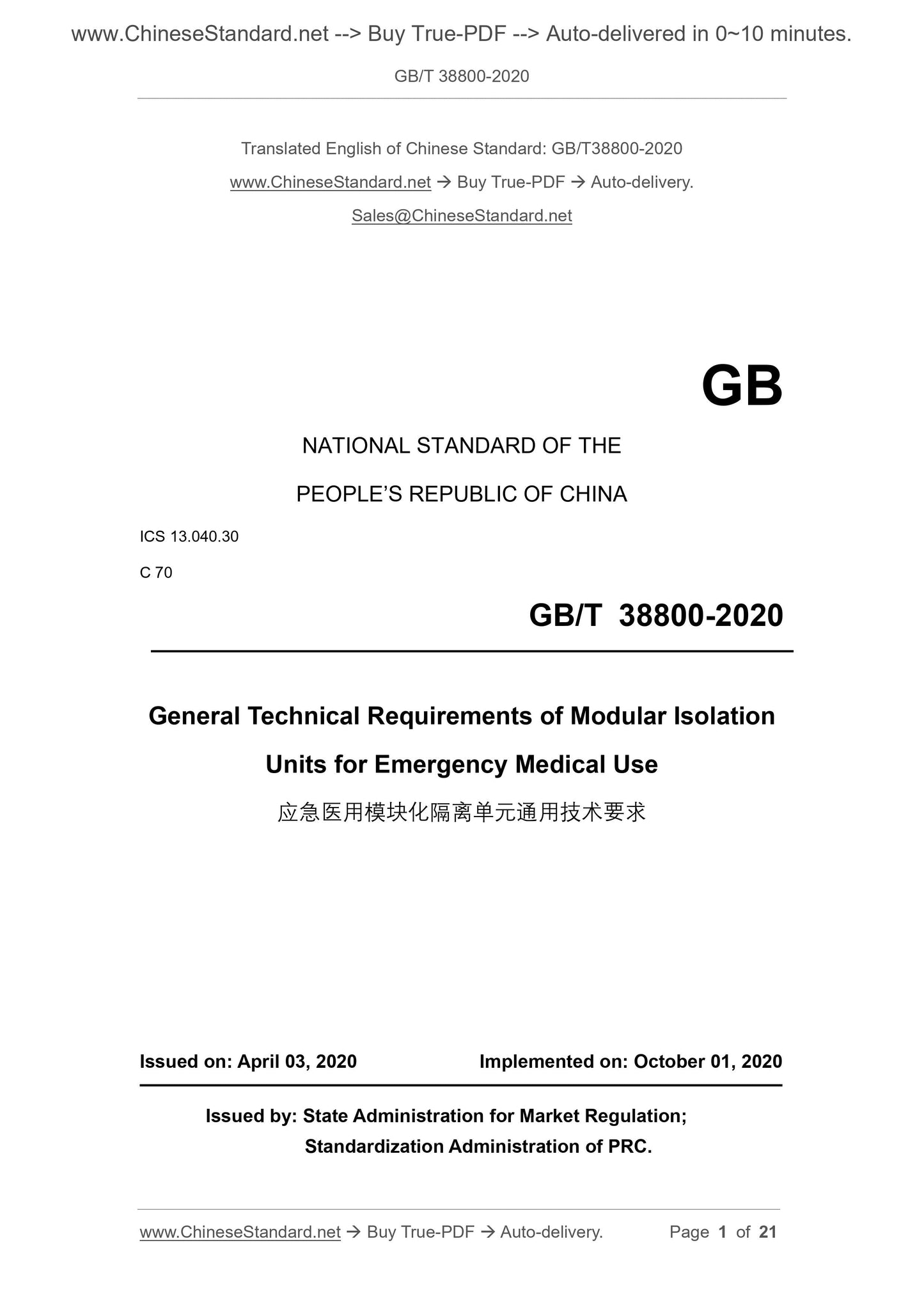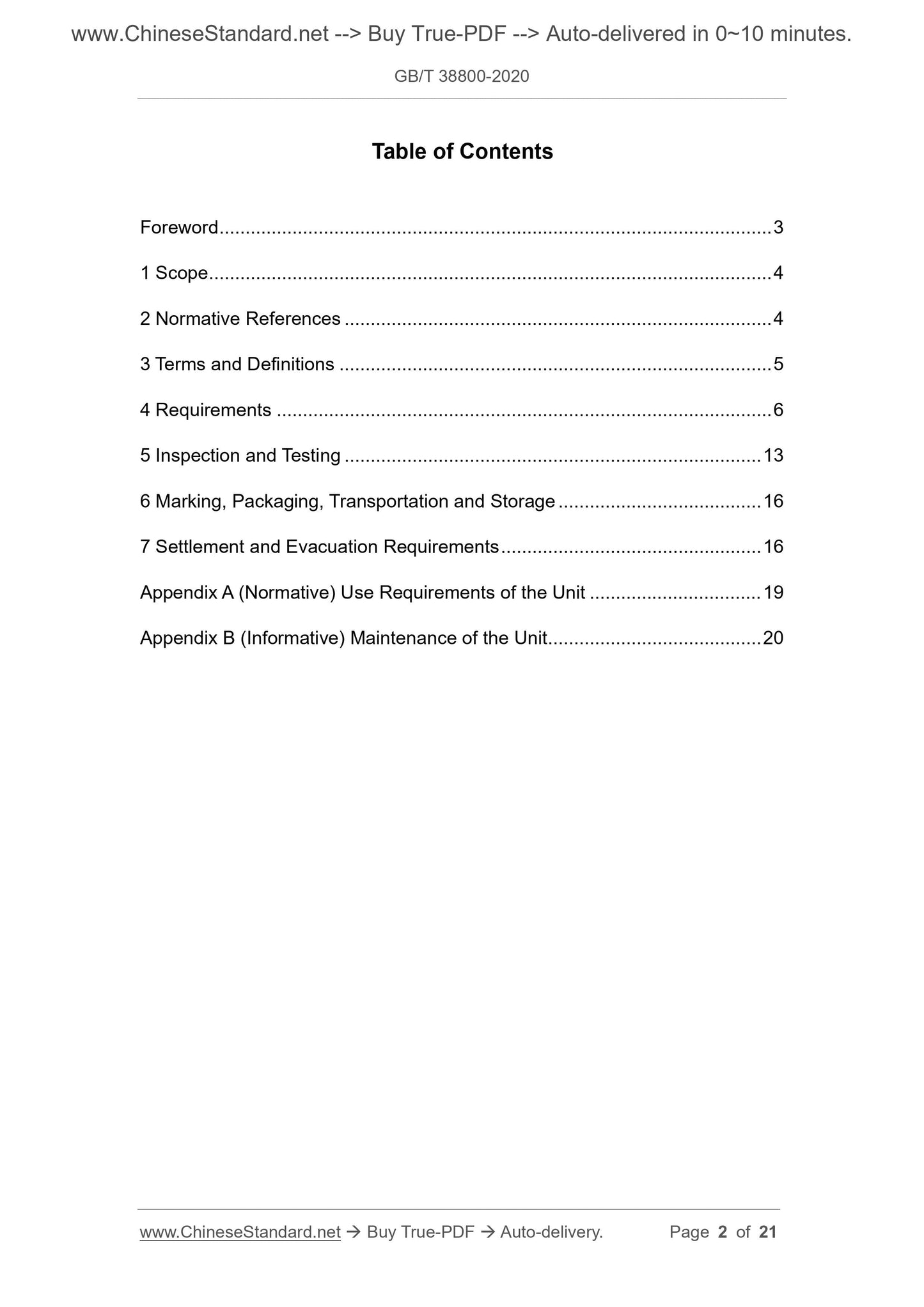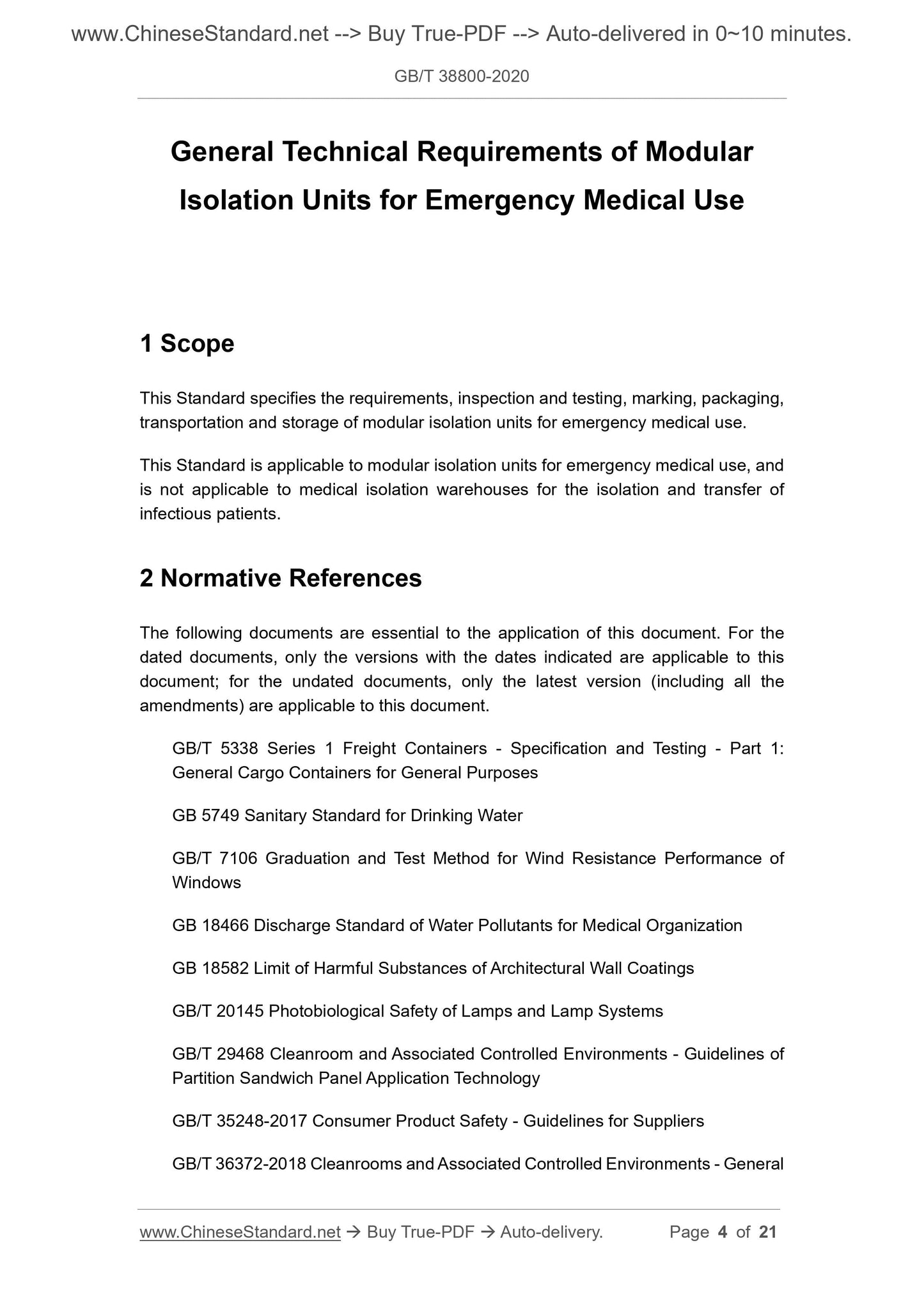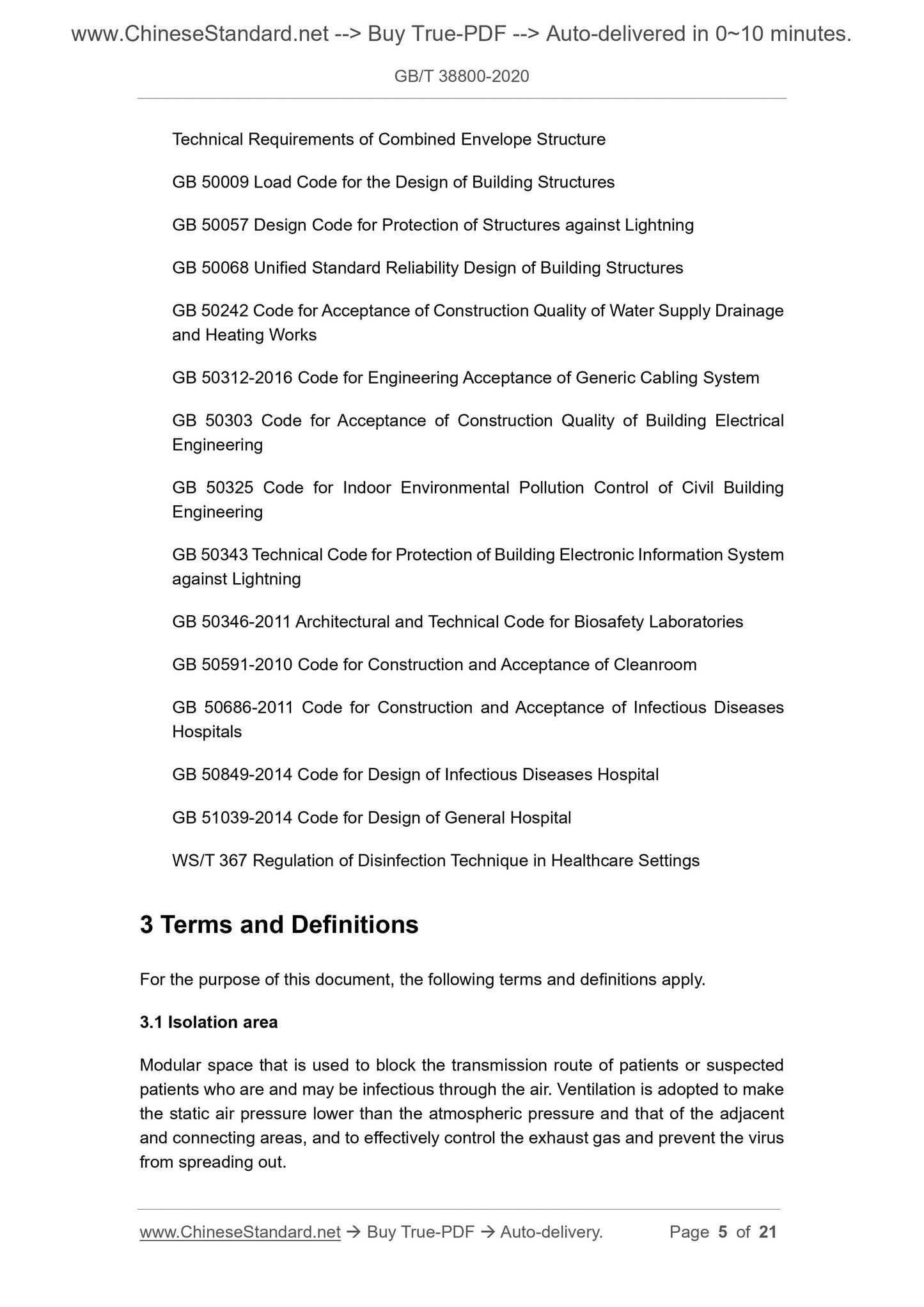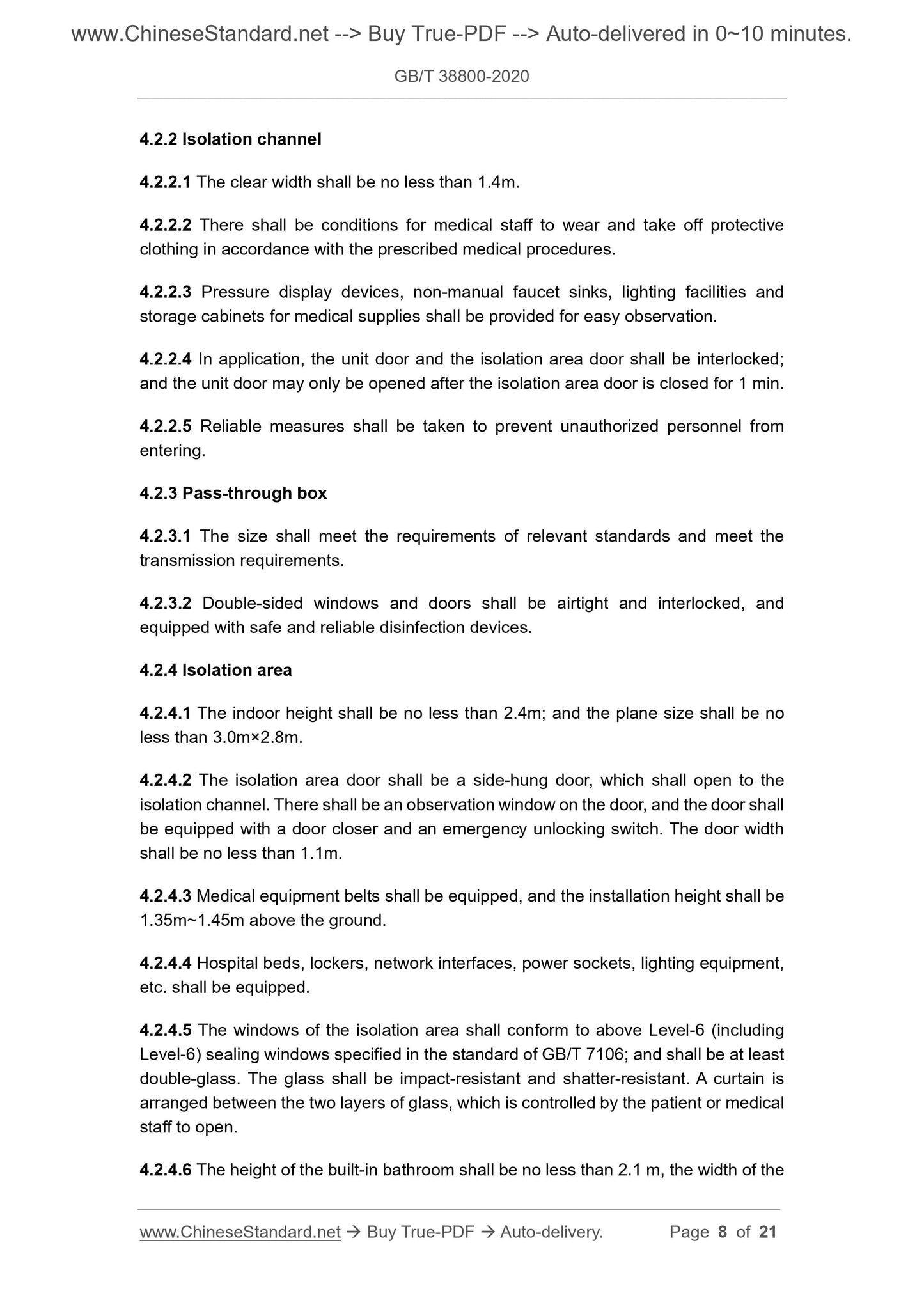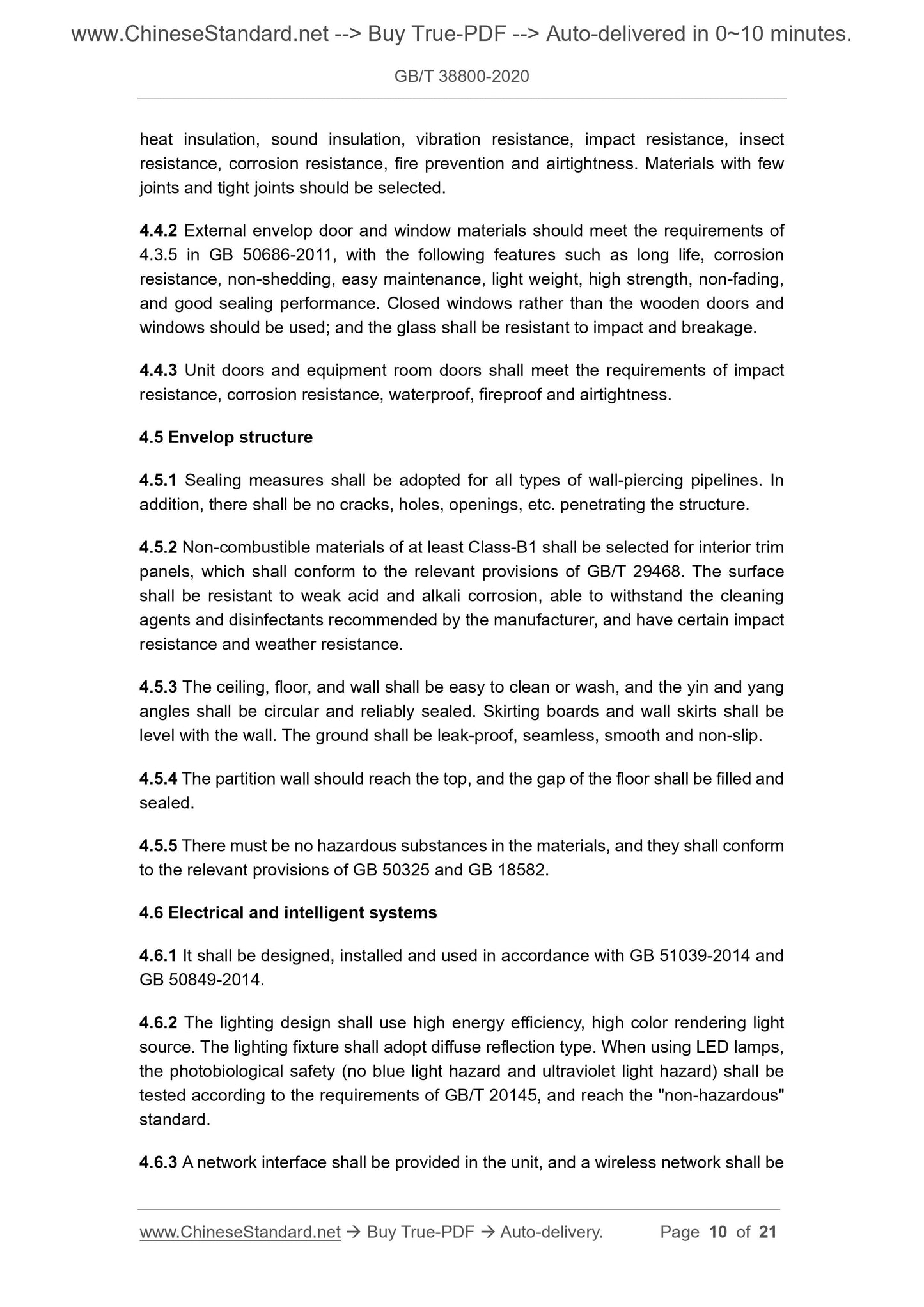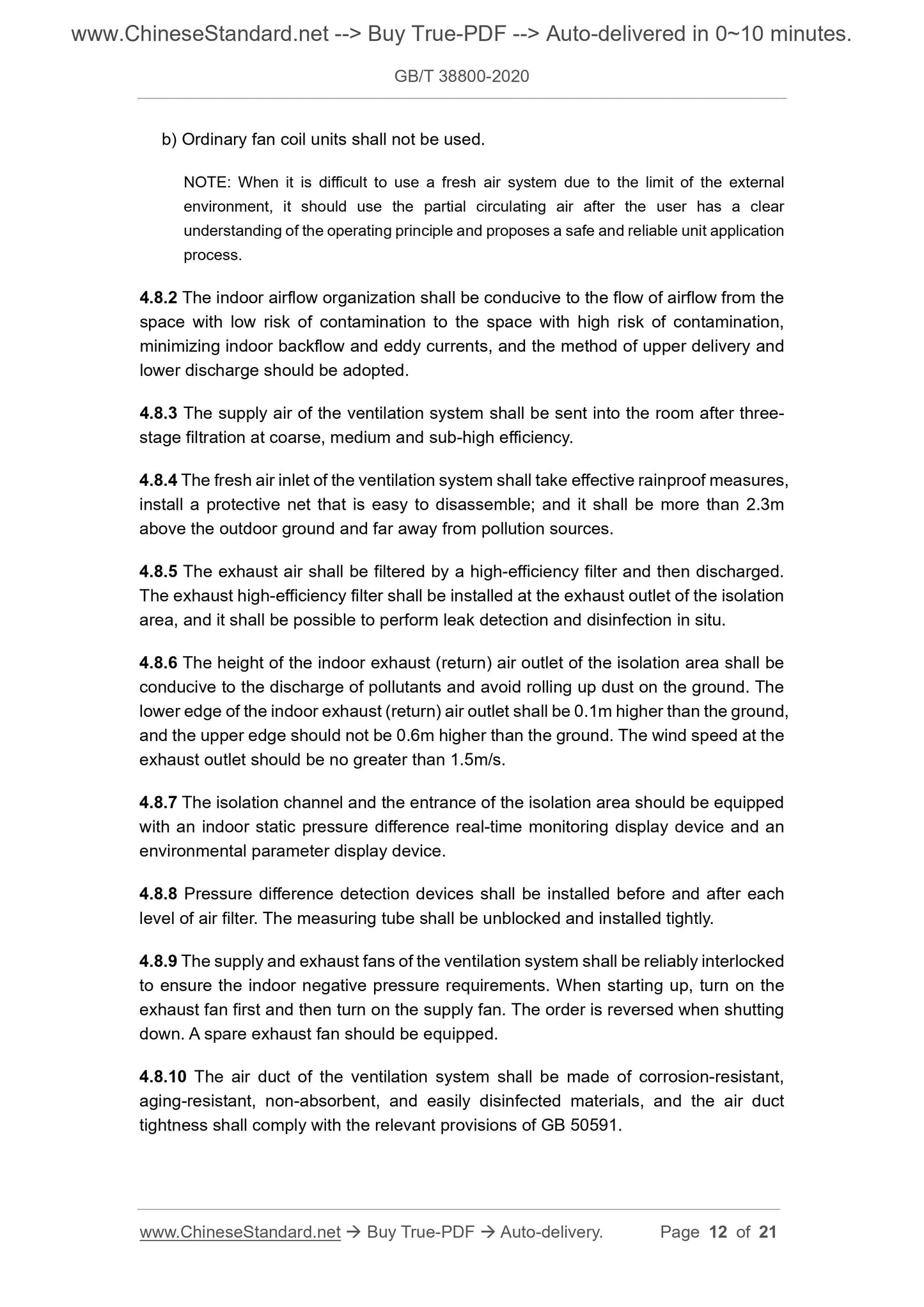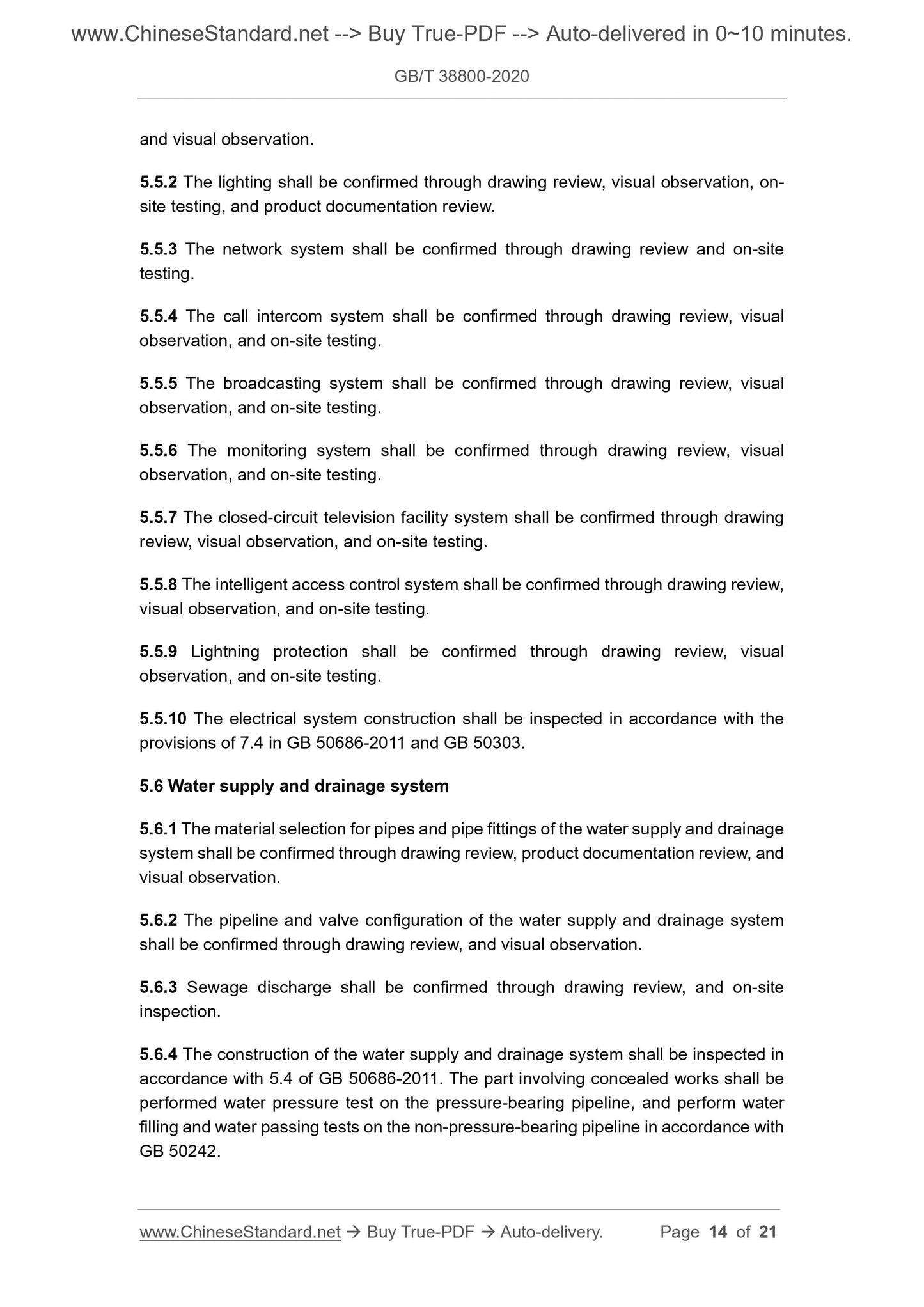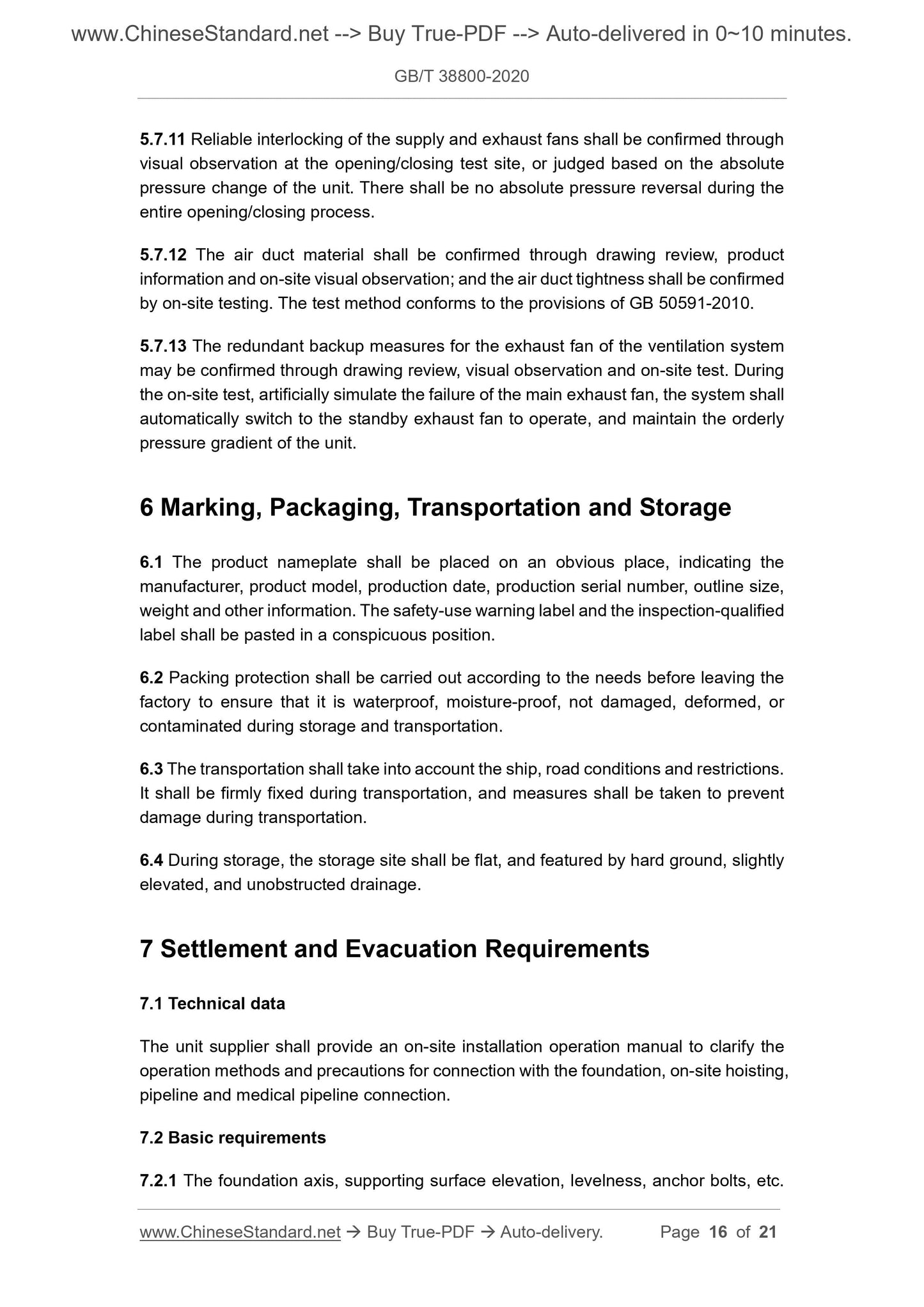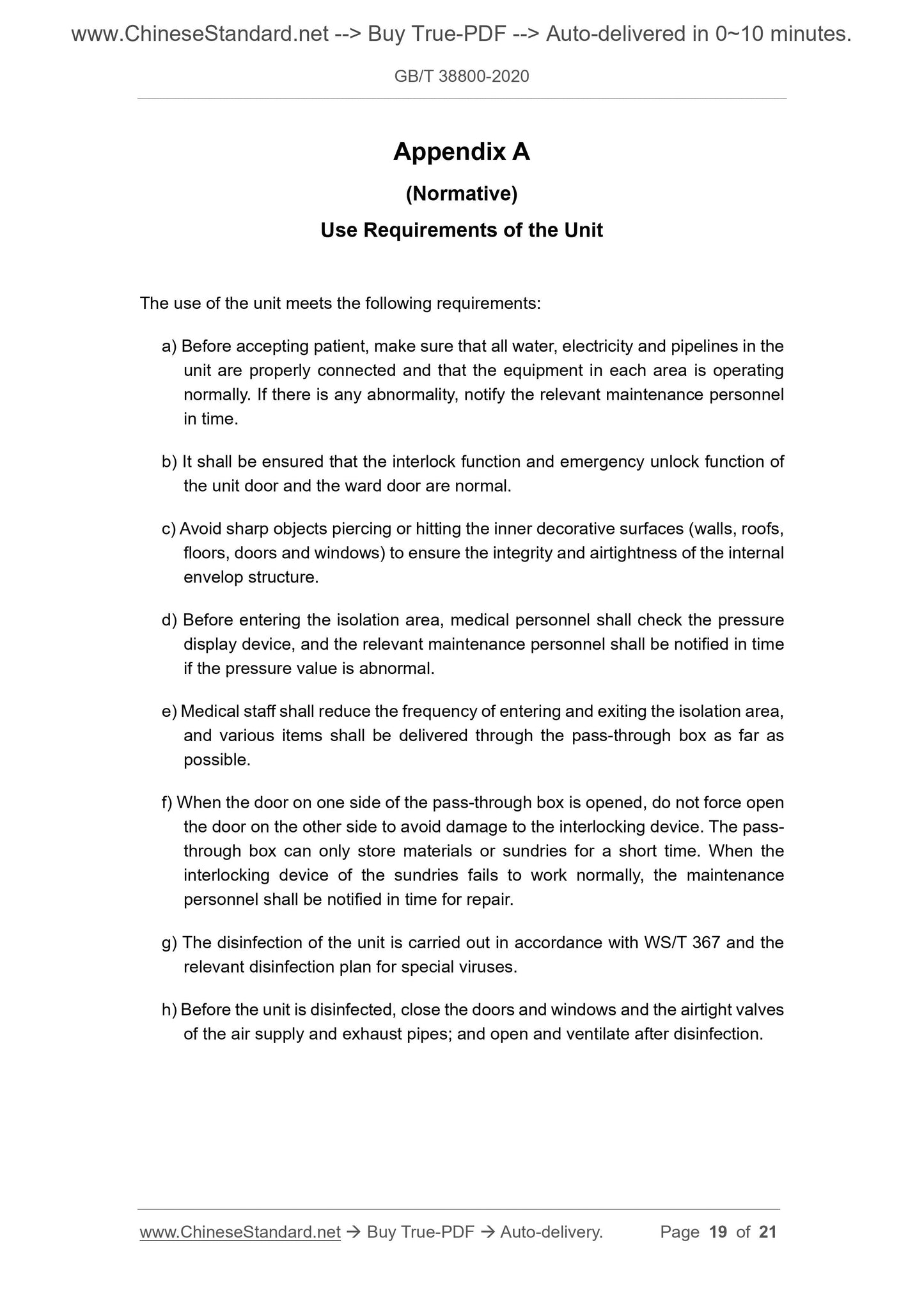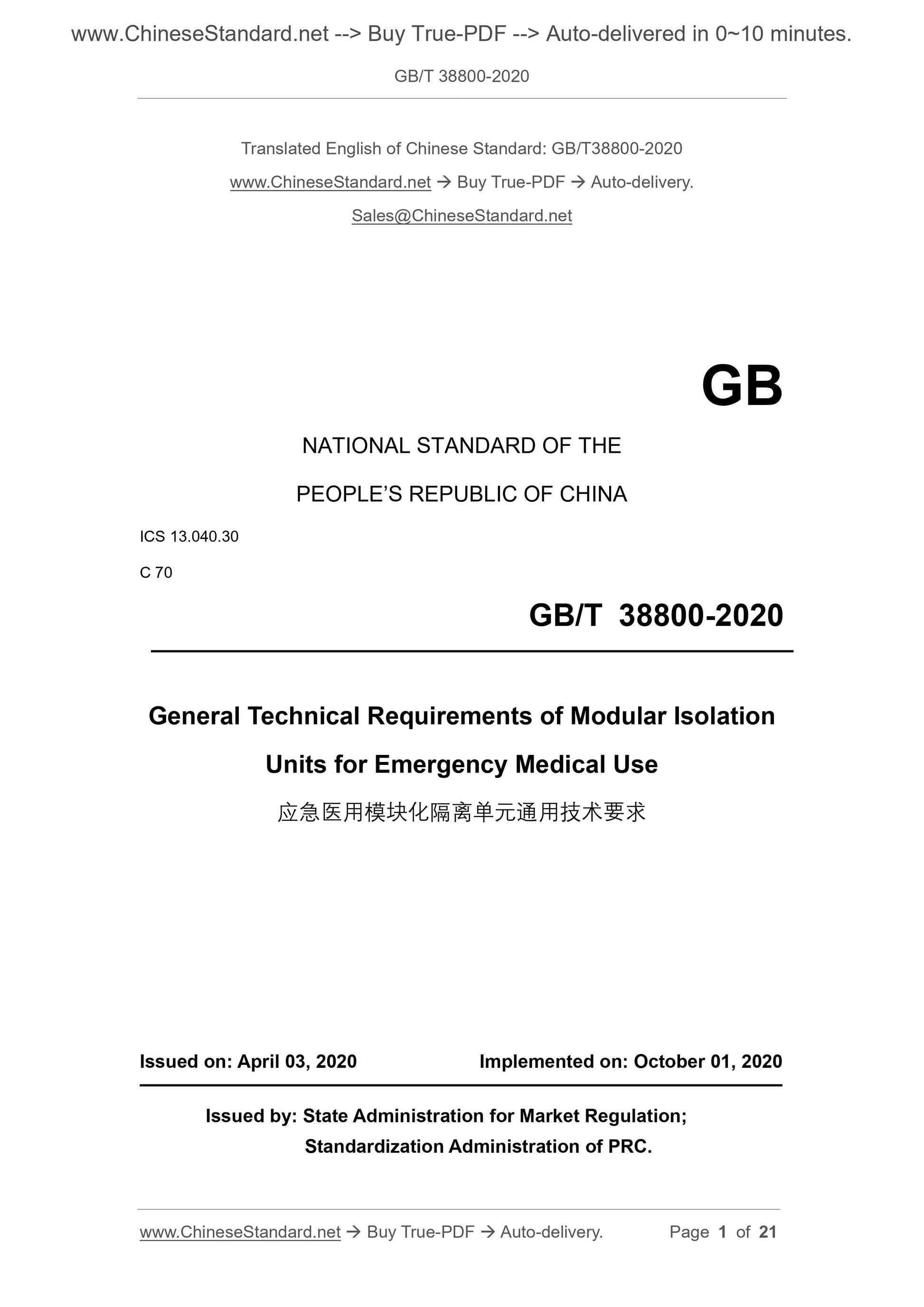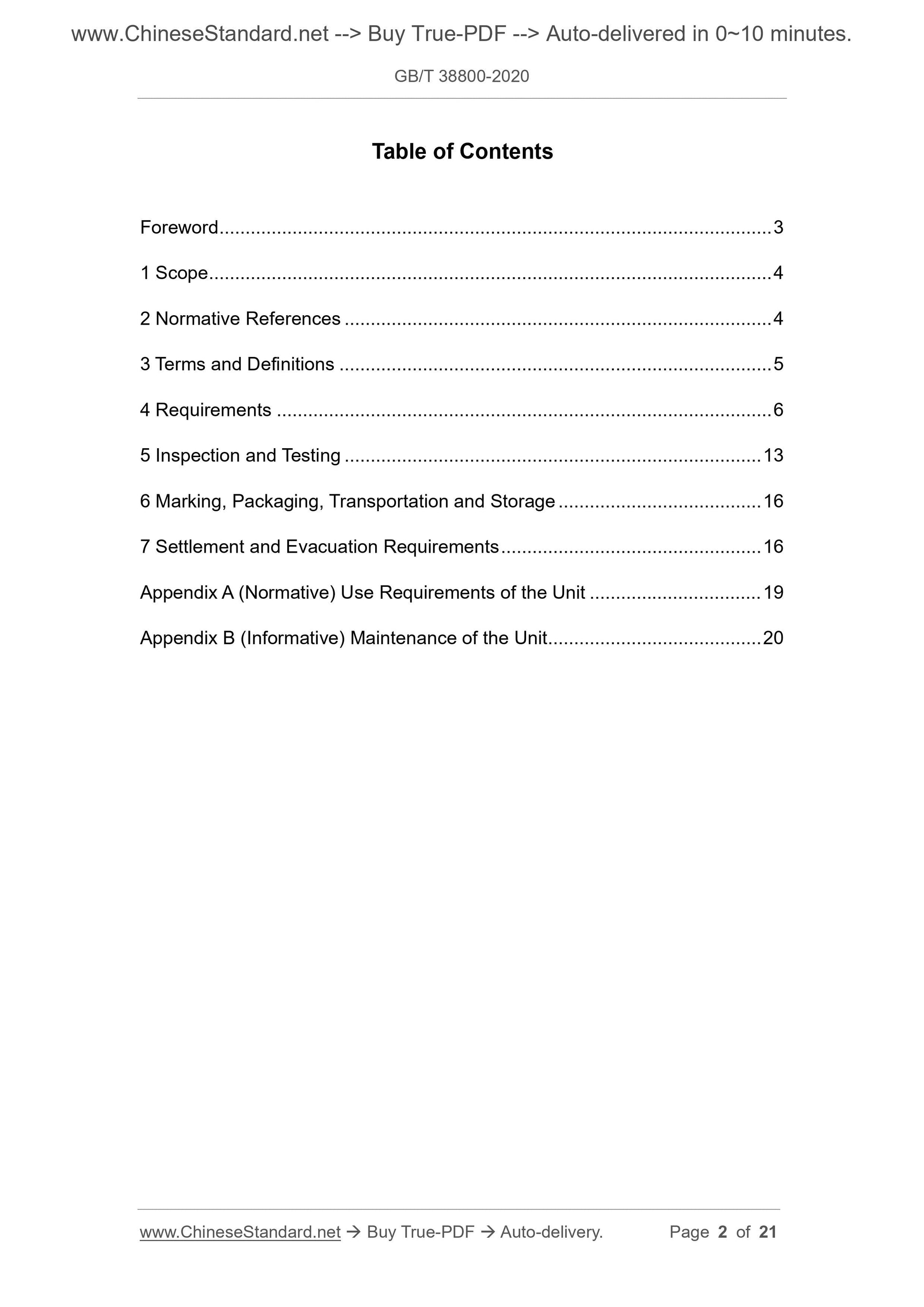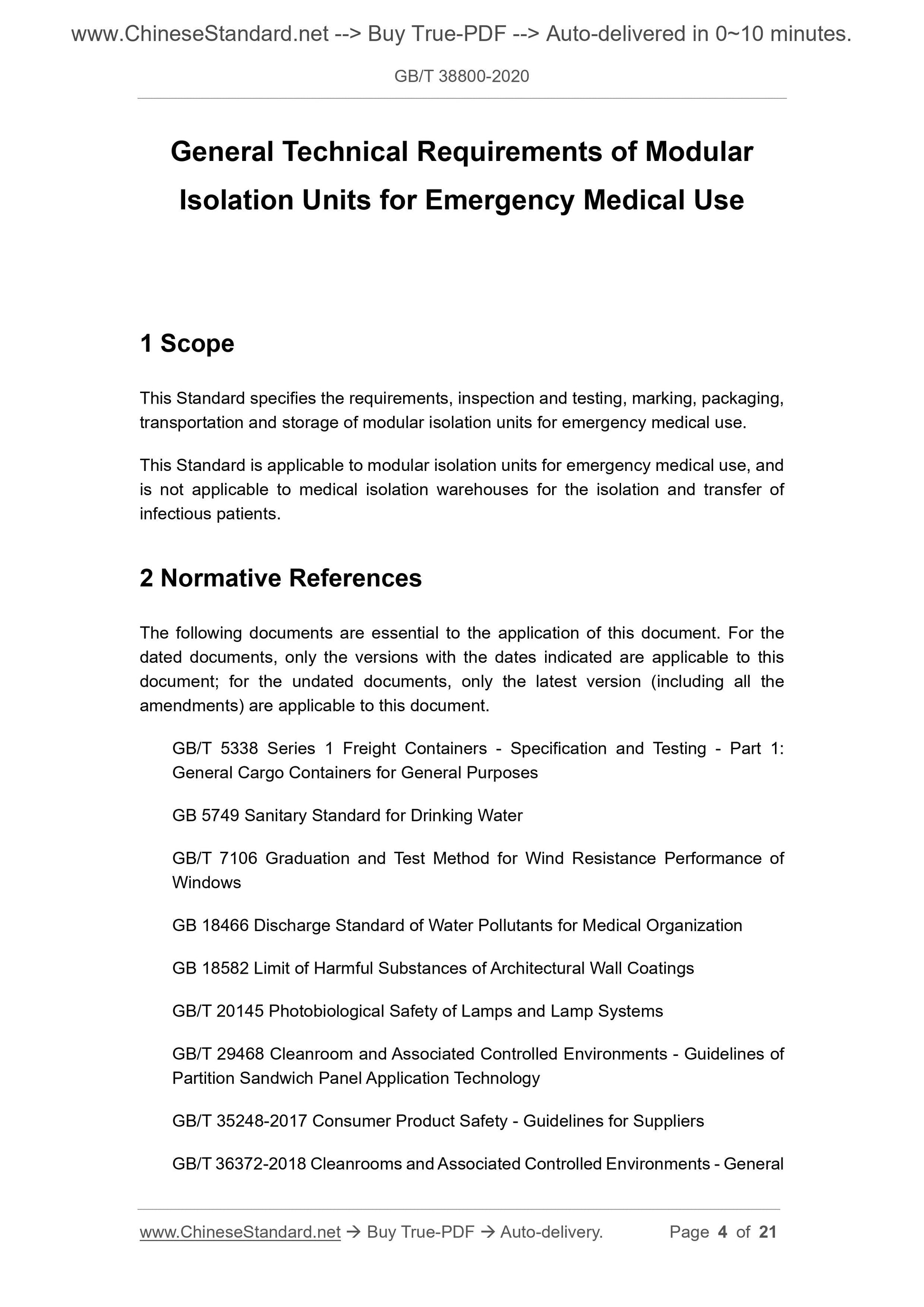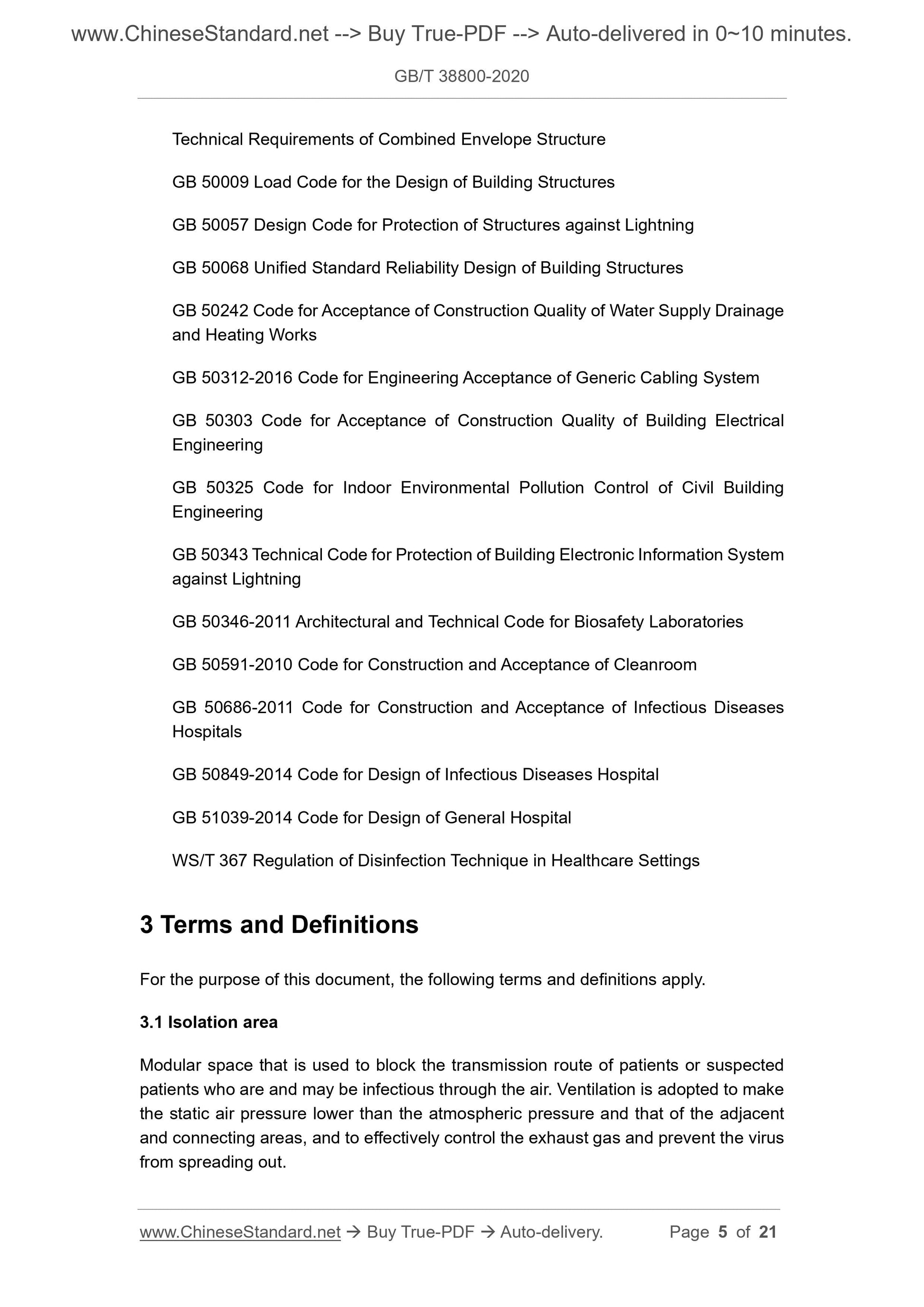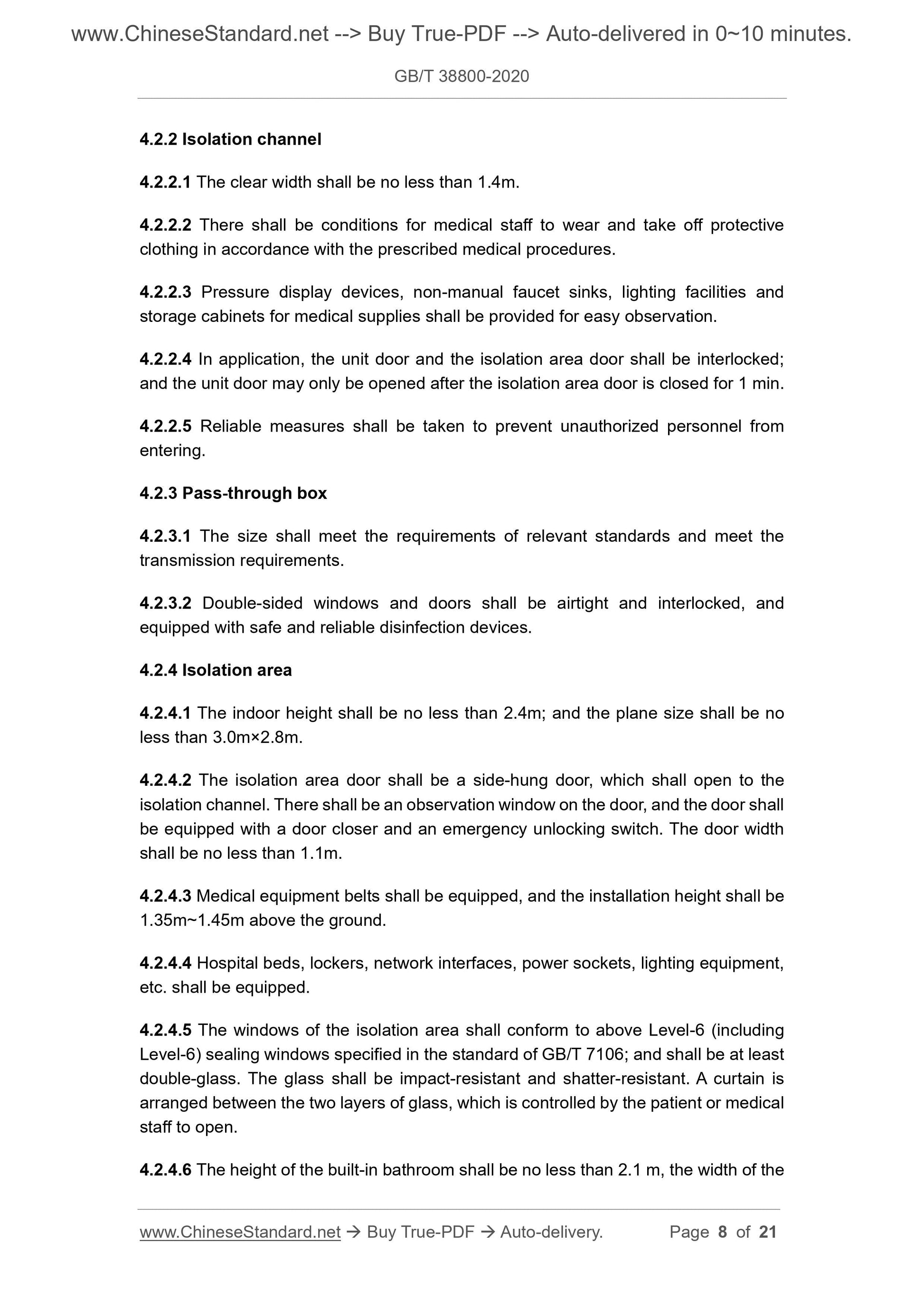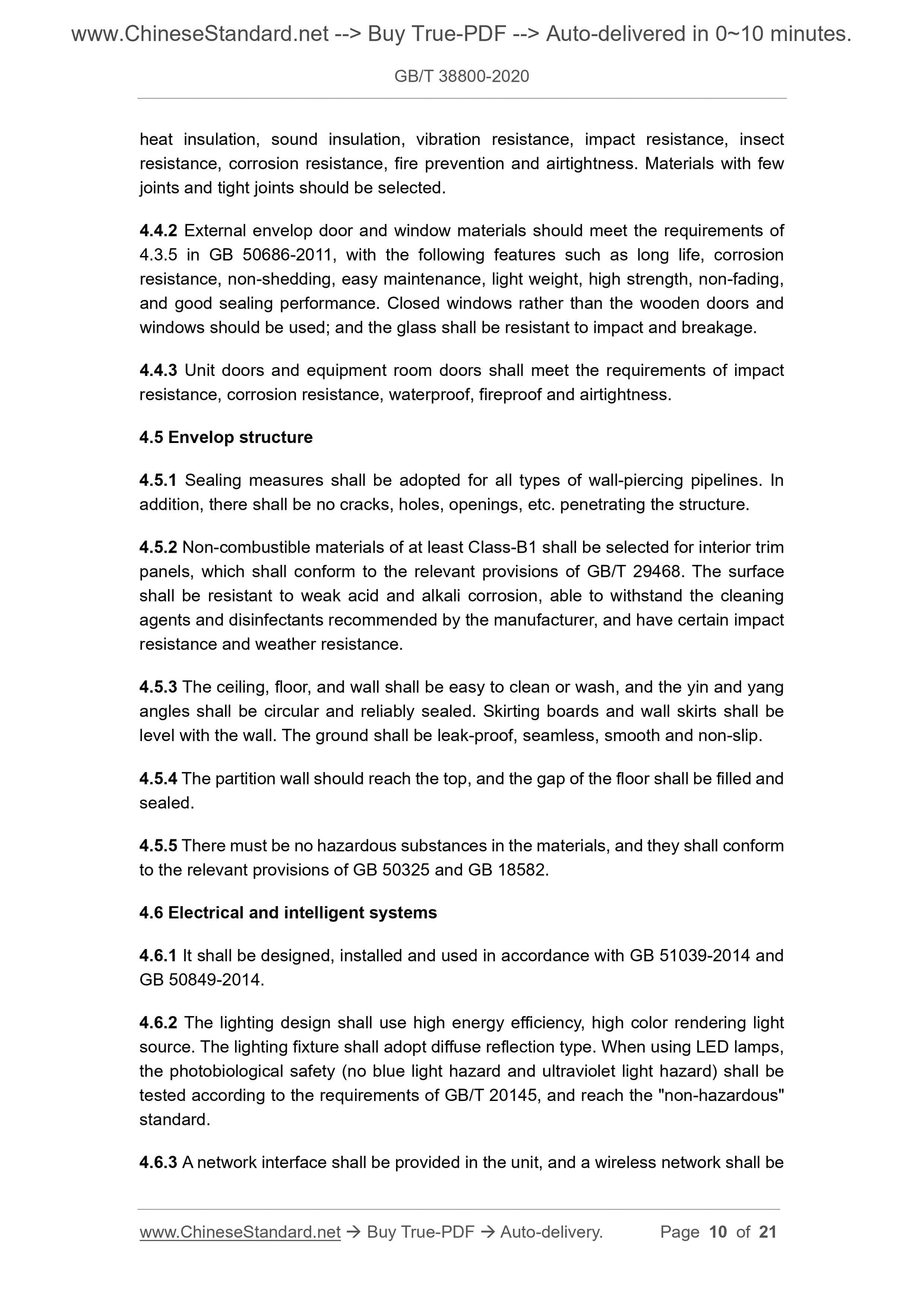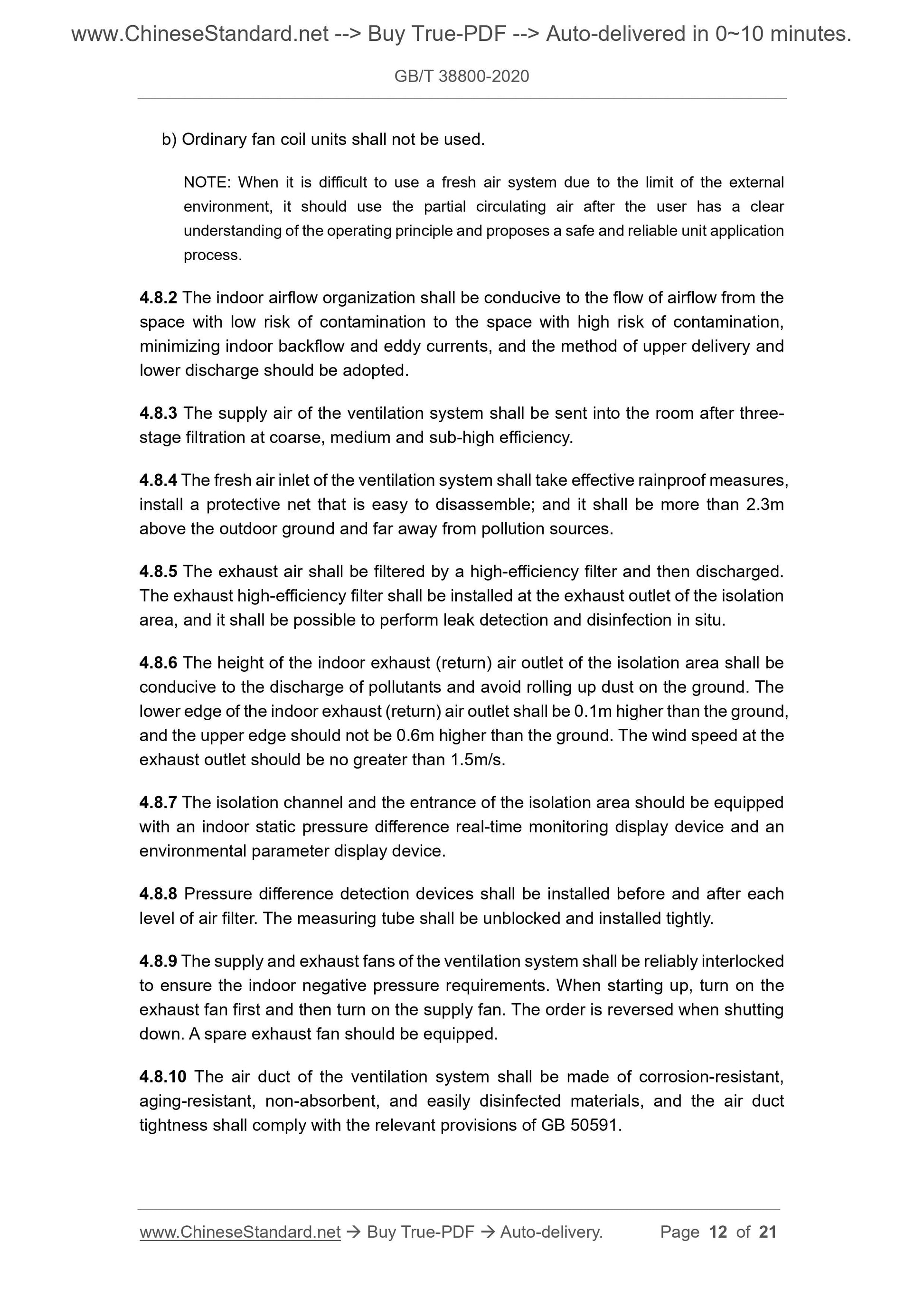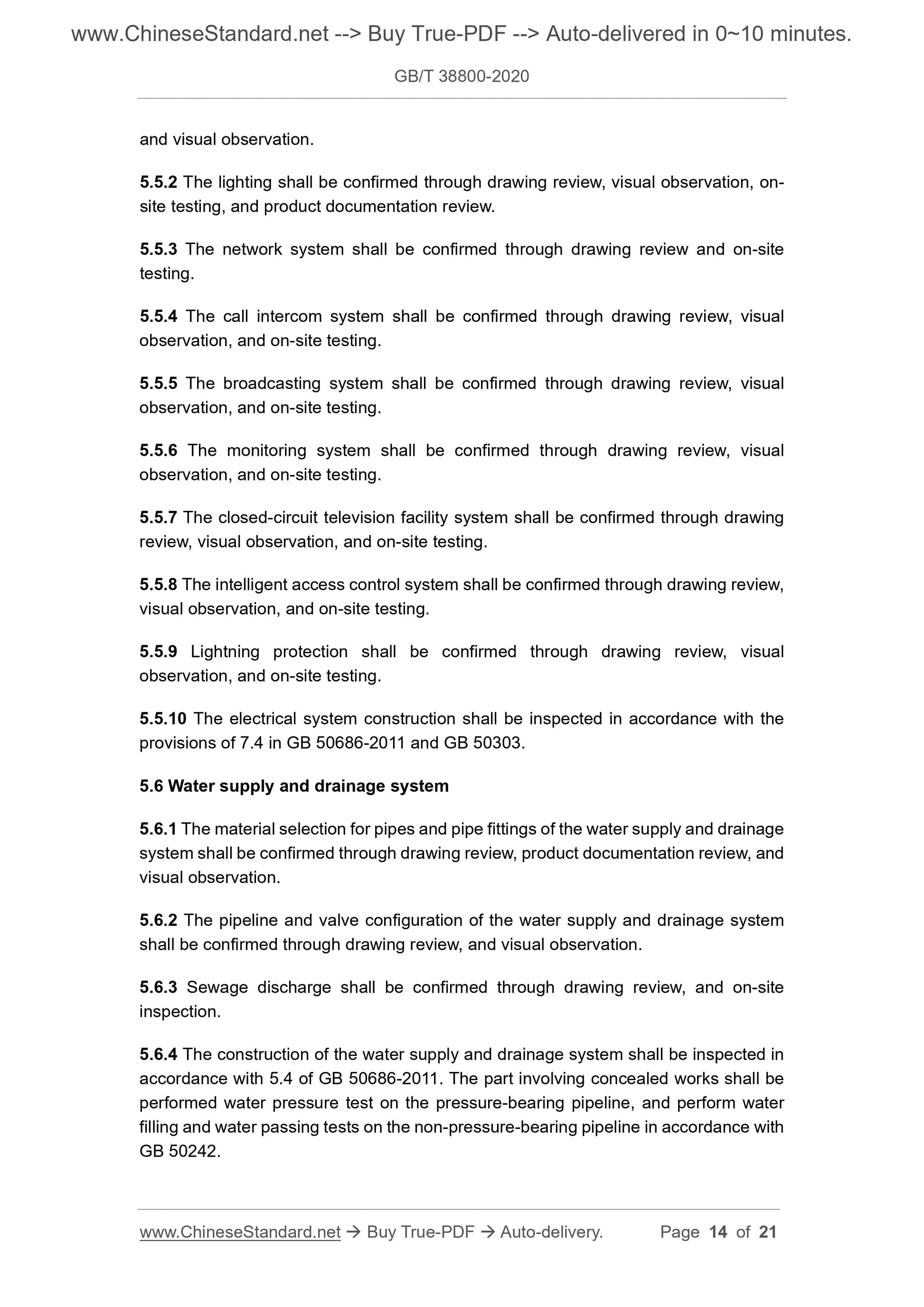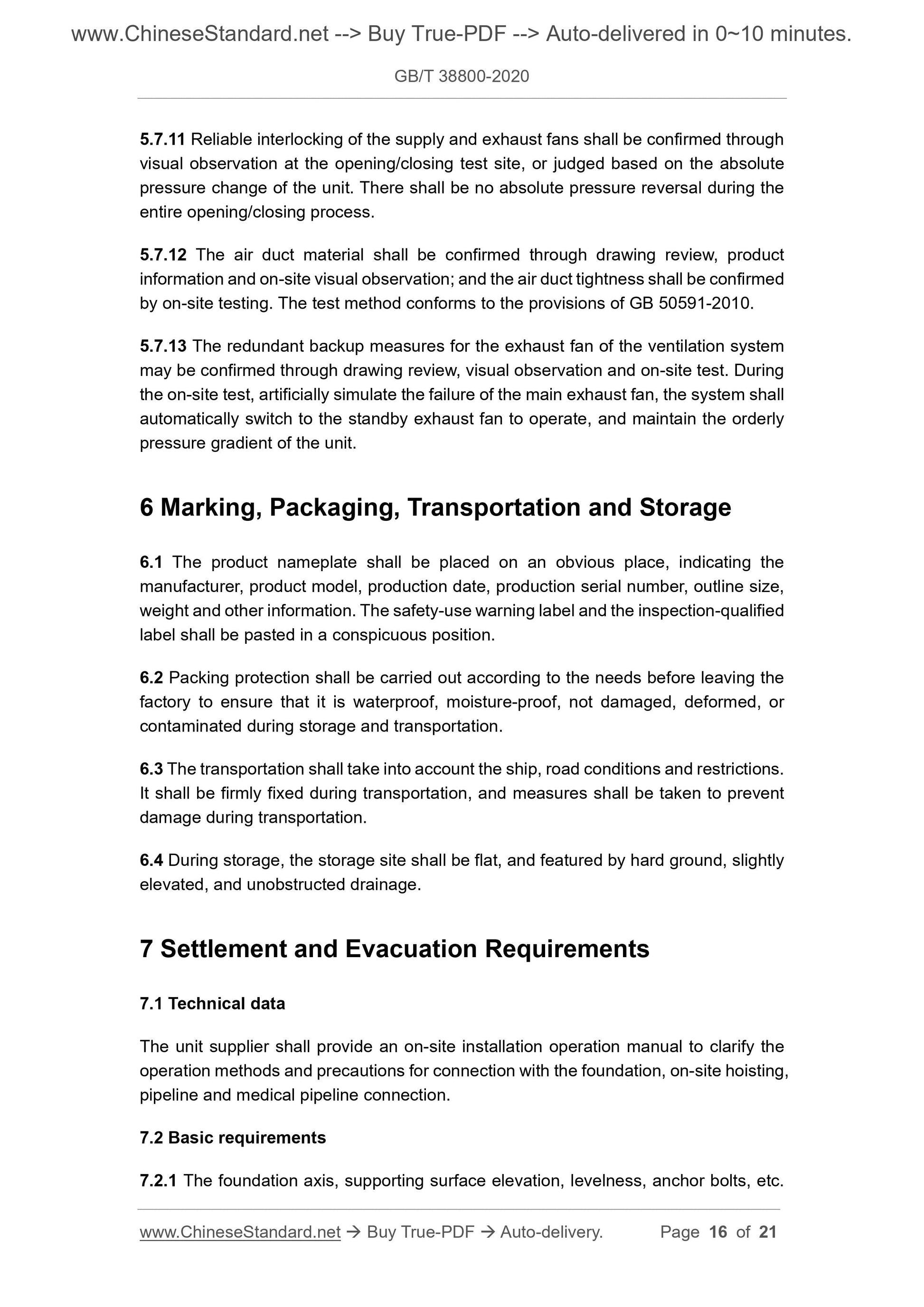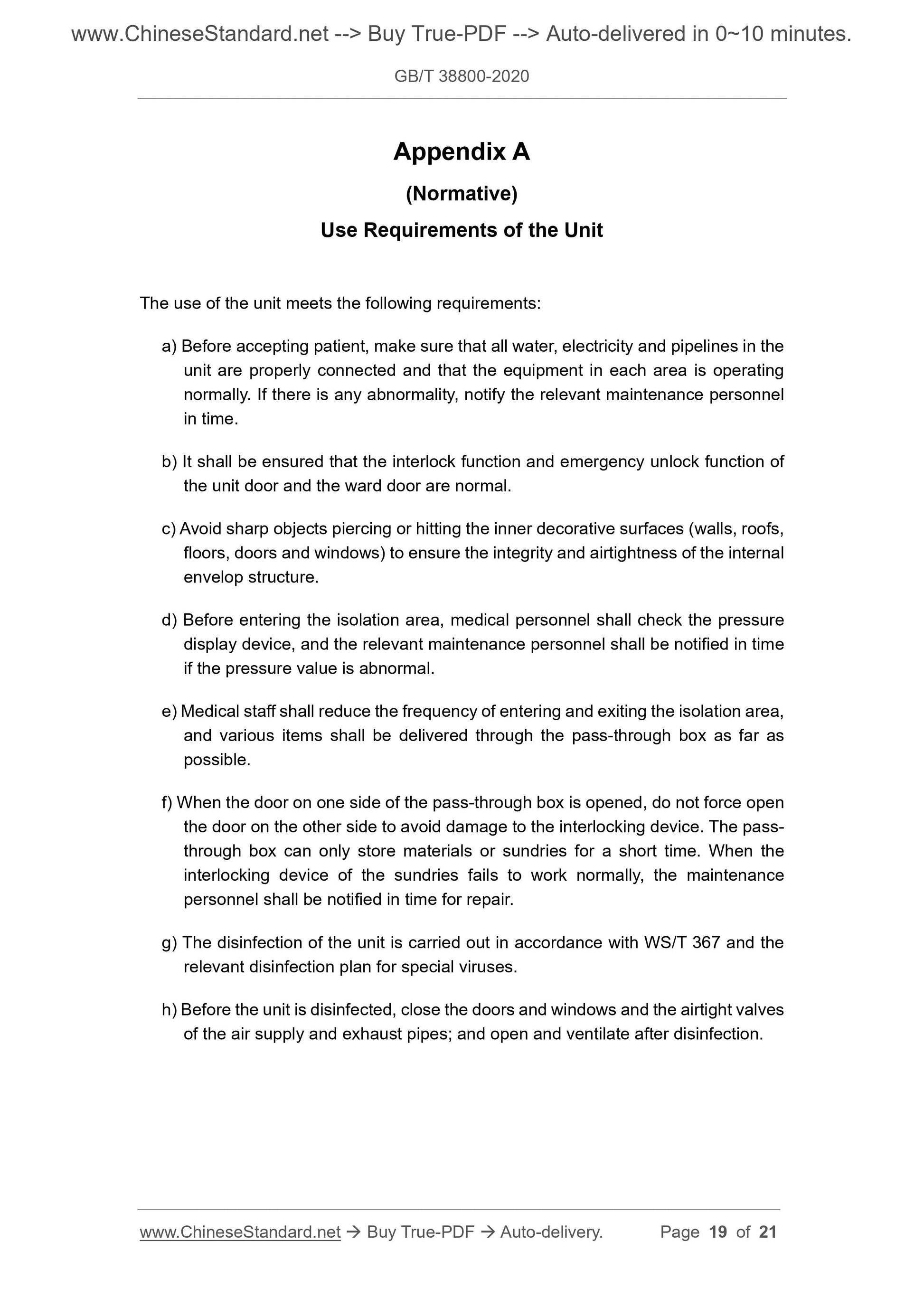1
/
of
10
www.ChineseStandard.us -- Field Test Asia Pte. Ltd.
GB/T 38800-2020 English PDF (GB/T38800-2020)
GB/T 38800-2020 English PDF (GB/T38800-2020)
Regular price
$185.00
Regular price
Sale price
$185.00
Unit price
/
per
Shipping calculated at checkout.
Couldn't load pickup availability
GB/T 38800-2020: General Technical Requirements of Modular Isolation Units for Emergency Medical Use
Delivery: 9 seconds. Download (and Email) true-PDF + Invoice.Get Quotation: Click GB/T 38800-2020 (Self-service in 1-minute)
Newer / historical versions: GB/T 38800-2020
Preview True-PDF
Scope
This Standard specifies the requirements, inspection and testing, marking, packaging,transportation and storage of modular isolation units for emergency medical use.
This Standard is applicable to modular isolation units for emergency medical use, and
is not applicable to medical isolation warehouses for the isolation and transfer of
infectious patients.
Basic Data
| Standard ID | GB/T 38800-2020 (GB/T38800-2020) |
| Description (Translated English) | General Technical Requirements of Modular Isolation Units for Emergency Medical Use |
| Sector / Industry | National Standard (Recommended) |
| Classification of Chinese Standard | C70 |
| Classification of International Standard | 13.040.30 |
| Word Count Estimation | 13,128 |
| Date of Issue | 2020-04-03 |
| Date of Implementation | 2020-10-01 |
| Issuing agency(ies) | State Administration for Market Regulation, China National Standardization Administration |
Share
